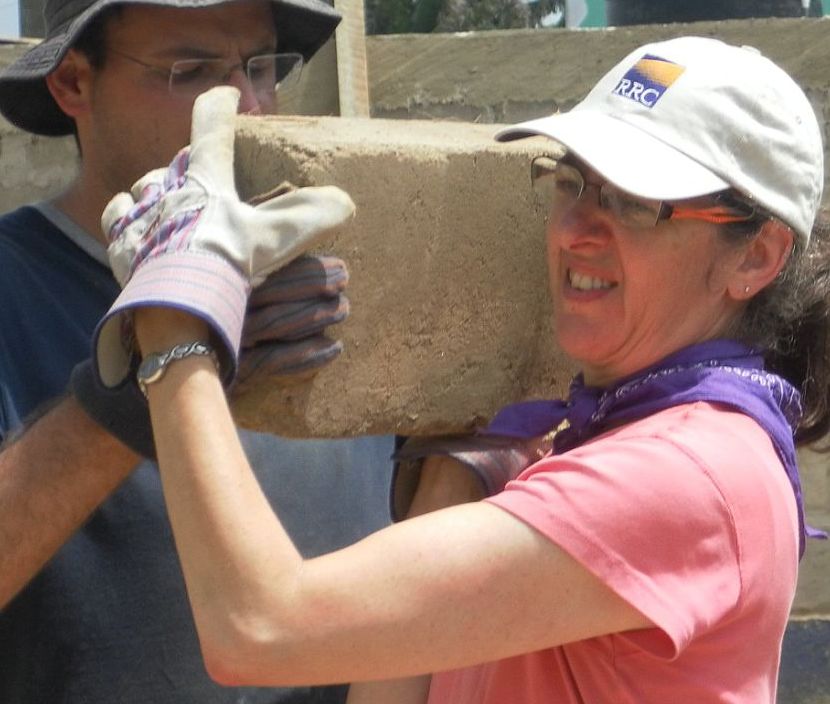Jacob said to his kin: Gather stones. They took stones, made a mound, and ate there by the mound. Laban called it Yegar-Sahaduta, but Jacob called it Gal-Ed. (Gen 31:46-47)
Two different languages, the same name. Witness-mound. Laban’s name for the site of this peace treaty is in Aramaic; Jacob’s is in Hebrew.
How did it come to pass that these two men from the same family used different languages for a place name? Though closely related, they had a rather complex relationship. They were not only father-in-law and son-in-law, but also uncle and nephew, and were in the midst of a complex tussle around some valuable mutual assets.
They were in the very same place, yet they clearly did not see it in the same way. They clearly did not see much that they shared in the same way. Earlier, Jacob had fumed: I served fourteen years for your daughters, six for the flock, while you changed my wages over and over. Laban response? The daughters are MY daughters, the animals MY animals – all that you see is MINE! (Gen 31:41,43)
This loaded exchange, filled with resonances well beyond the words, then leads to the treaty, at a place they clearly identify by the same-yet-different name.
July 30, 2014. The power of this different-name, same-place was illuminated for me under a hot summer beating down on the rolling hills outside of Bet-Lechem. I dare not try to name all the places I trod to reach my destination. The roads, the region, the buses and taxis, the highways, the pathways, even — especially — the towns and cities – are called by two peoples by different names.
It took a while to reach Daher’s Vineyard. I was honoring the commitment I’d made a few years before to Daoud Nassar, when we had met in the US – to visit him and the Tent of Nations, a project established in 2000 on Nassar family farm land.
Daoud’s brother Daher showed me around the farm and the buildings associated with the Tent of Nations, including caves built by their grandfather Daher, who bought the land in 1916. When I look now on this inter-cultural project’s web page, and see a row of children sitting along the stone ledge along a dark curved wall, I remember the stories of the boys sleeping and growing and playing in its sheltered stone space.
Back out in the sun, I sat with Miladeh, their mother. In her limited English – vastly superior to my non-existent Arabic – she asked where I was staying. I replied: Jerusalem. She responded: Al-Quds.
We stood quietly looking out over the orchards and the hills; over the area that Daoud would later show me where 1000 fruit trees had been bulldozed that spring; over the unseen and, to the Nassars, inaccessible roads that led from their farm to the nearby community of Neve Daniel and the other settlements of Gush Etzion. Miladeh wrote her name for me in my notebook. I can’t read it, but it is next to this note: Miladeh Nassar, mother of Daher and Daoud. Tent of Nations, Palestine.
I went back to Jerusalem later that day, not to Al-Quds. But it was the same place.
I tell this story, we read Jacob and Laban’s story. We look at the same mounds, we see different places. What lens, what device, would provide me and Miladeh with the capacity to see and name those places with a shared vocabulary?
The language of human rights speaks powerfully to this question, in unequivocal and universal tropes. Set out in 30 Articles, the Universal Declaration of Human Rights begins: All human beings are born free and equal in dignity and rights.
There will always be stories of people who see the same place and name it in the language of their ancestry. Yet it remains an urgent need for us now, today, to realize a vision of one-place-with-many-names to truly hold, in all its complexity, the land of our biblical heritage.
Laban said: This mound is witness between me and you this day; so its name was Gal-Ed. And also Mitzpa, because he said: May Y-H-V-H guard between you and me when we are out of sight of each other. (Gen 31:48-49)
The encounter ends with a blessing of Divine protection, drawn down through the energy of the new name, for the mound whose stones bear witness to peace.
Rabbi Elizabeth Bolton is a graduate of the Reconstructionist Rabbinical College (’96) and serves Or Haneshamah: Ottawa’s Reconstructionist Community, where she is the first woman and first queer congregational rabbi in the Canadian capital. Liz was an early rabbinic chavera of T’ruah, then known as RHR-NA, and participated in an AJWS Young Rabbis Delegation to Ghana.

